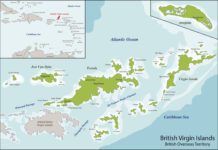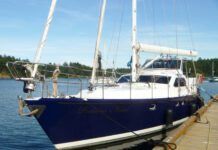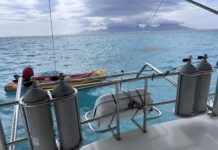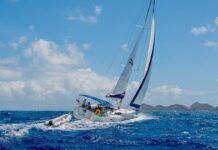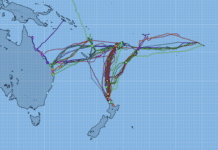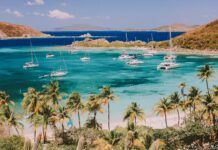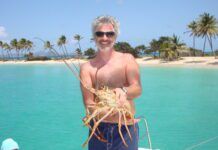Bluewater Design: Weight and Dynamic Stability
It is not enough for the boat to be able to handle the conditions, she also has to carry a crew and everything they...
Caribbean Bareboat Chartering Basics: Daily Sail Plan
If you’ve read “Bareboat Chartering Basics” and want to delve deeper into the planning process, read on for our March 2025 sail plan, which...
When Electronics Fail: How to Navigate After Lightning Strikes
Lightning is an anomaly: It strikes wherever and whenever it wants. In my case, it struck me and by boat 200 miles south of...
Thinking Small for Big Ocean Crossings: Choosing a Small Offshore Cruiser
Today, the average cruising boat is probably in the 40- to 45-foot range. To my mind, that is too big for a couple to...
How to Scuba from Your Boat
With all of the logistics, specialized knowledge and costs involved, you may be asking yourself “Why would I want to go diving?” This is...
Caribbean Bareboat Chartering Basics: Top Pre-Departure Tips
Assuming you’ve read my previous articles on this subject, you’ve now decided where you want to go and what type and size of boat...
Top 6 Tips for Pacific Rally Cruising
Whether you’re a seasoned cruiser or a newcomer eager to chart your course across the Pacific, you need to introduce yourself to Viki Moore....
Bareboat Chartering Basics: Charter Companies and Planning Tips
We’ve been bareboat chartering for the last 35 years. Since our first time, boats and the charter companies have evolved and grown in numbers...
Bareboat Chartering Basics: Sail the Caribbean the Practical Way
Growing up in Montreal, I dreamed of sailing in the warm waters of the Caribbean. Still, to this day, I am drawn to the...
How to Prep and Store More Interesting Produce for Passage
As any seasoned sailor knows, managing space and resources on a boat is paramount. This is especially true when it comes to storing and...





































